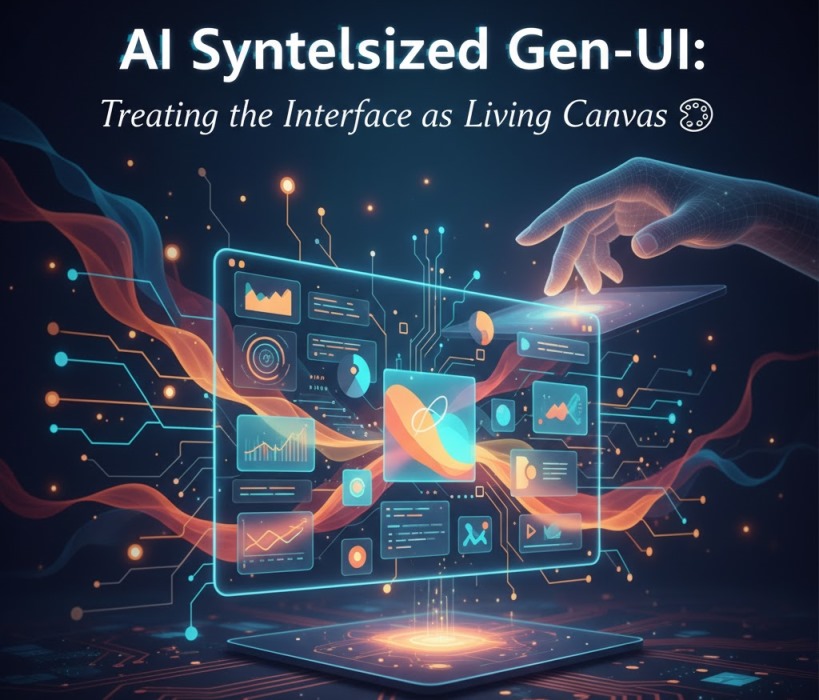
In a digital world where interfaces shape how stories, brands, and lessons are felt, Henti3z is emerging as a creative-centric platform that blends AI, art, and interaction. Positioned at the intersection of generative interfaces and adaptive journeys, Henti3z invites creators to build experiences where layouts, scenes, and responses evolve intelligently instead of staying frozen in a single design.
According to recent public descriptions, the platform combines Japanese-inspired visuals, interactive storytelling tools, and intelligent interface frameworks in one cloud environment aimed at artists, designers, marketers, and educators. It is designed to turn static pages into responsive spaces that react to audience choices and data in real time, rather than relying only on pre-scripted funnels.
What is Henti3z Digital Platform?
At its core, Henti3z is presented as a digital creation and delivery platform. Creators can storyboard narratives, assemble scenes, plug in media (images, audio, animation), and then let the system’s intelligence help decide how those elements appear, adapt, and flow for different users. In that sense, the platform goes beyond a classic content management system and behaves more like a creative operating layer for immersive stories, branded experiences, or learning modules.
The platform sits naturally inside the fast-growing field of AI UX design, where teams use AI to accelerate interface decisions, wireframes, and layout variations while still retaining human editorial control over look, tone, and ethics.
AI Synthesized Gen-UI: Treating the Interface as a Living Canvas

Generative user interfaces—often shortened to Gen-UI—are a new paradigm in which screens are composed dynamically by AI rather than hard-coded once. Industry research uses the term generative UI to describe interfaces that are generated in real time to match user intent and context, and Henti3z clearly aims to align with that direction.
Within this paradigm, a typical project might start with a small set of key states that the creator defines. From there, the system can suggest alternative component structures, pacing, and transitions based on the creative goal. That approach reflects the broader trend of AI in UX design, where systems help decide not only what information to show but also when, in what hierarchy, and with how much visual emphasis.
Seen from a tooling angle, Henti3z belongs to the new generation of AI design tools and AI UX tools that move teams from blank canvas to intelligent prototype quickly and then support iteration based on analytics and user testing instead of guesswork.
Smart UX: From Static Journeys to Adaptive Experiences
Where traditional UX is dominated by fixed funnels, Henti3z leans into patterns often called AI-driven UX: interfaces that update micro-copy, emphasis, and pacing based on how people actually behave. Over time, this can feel like AI-powered UX—a layer of intelligence that keeps quietly smoothing friction points while leaving major creative decisions in human hands.
This is also where AI user experience overlaps strongly with narrative design. Because Henti3z is built around stories, choices, and scenes, creators can combine rules with data so that each visitor steps through a slightly different route. That concept is closely related to AI-driven personalization and AI personalization in UX, where contextual signals help decide which part of the journey should appear next instead of forcing everyone through the exact same path.
Smart UX in Henti3z also depends on sensing more than just clicks. Device, screen size, interaction history, and even the pace of scrolling can be used to drive context-aware UI logic, yielding dynamic user interfaces that keep subtle details—like density, prompts, or visual weight—in sync with each person’s situation.
Gen-UI Workflow with Henti3z
For designers who are used to static wireframes, the Gen-UI mindset can feel like a leap. In a typical build with Henti3z, you define the experience goal and audience, sketch out core scenes, and then let the platform’s AI propose alternate layouts and transitions. Here, ideas such as AI UI design and AI in UI UX design become very concrete, because the system is actively suggesting hierarchy, component size, and interaction patterns instead of leaving every decision to manual tweaking.
Over time, teams can treat Henti3z as an environment for AI-first product design, where intelligence is not bolted on at the end but woven into how screens are orchestrated from day one. When the engine proposes variations to boost clarity or completion, it behaves like a continuous assistant for AI-led experience optimization, helping creators chase better outcomes without running separate, heavy optimization projects.
For those specifically exploring generative patterns, Henti3z can also be aligned with emerging practices in generative UI design, using its rule-driven scenes to prototype interfaces that rebuild themselves around user intent rather than just viewport size.
Who is Henti3z Best For?

Based on available public information, Henti3z is especially attractive for four profiles:
- Visual storytellers and digital artists who want their work to feel alive instead of trapped on flat pages.
- Learning designers and educational teams who see value in branching journeys and adaptive pacing.
- Marketing and brand teams who need memorable interactive campaigns rather than simple landing pages.
- Indie creators and small studios that want sophisticated interaction without managing a large engineering group.
For these audiences, Henti3z acts as a bridge between creative vision and technical execution. It supports patterns that can reasonably be classed as intelligent user interfaces, and it simplifies planning an AI-enhanced user journey without demanding months of custom development.
Also Read: Joyland AI Review: Is It Worth Upgrading? (Free vs Paid)
Strengths, Limitations, and Overall Verdict
On the strengths side, public reviews emphasize that Henti3z offers a clean, modern UI, a strong emphasis on storytelling, and forward-looking support for AI-assisted experiences. The presence of AR/VR hooks and optional blockchain-based rights management also gives valuable future-proofing for teams working with immersive media or sensitive intellectual property.
Equally important, Henti3z lines up with current best practices in AI-augmented UX thinking: give algorithms the repetitive layout and optimization tasks while humans stay accountable for narrative, ethics, and brand. That combination lets teams benefit from quiet AI-powered interface automation running in the background while they focus on story, pedagogy, or campaign strategy.
There are, however, trade-offs to consider. Because Gen-UI and Smart UX depend on a clear content structure and thoughtful rules, new teams may face a learning curve in deciding how to model their stories or training flows for Henti3z. Some creators may also prefer simpler tools when their projects do not require advanced personalization or branching logic.
Even with those caveats, the overall verdict is positive: if you want to explore AI-synthesized interfaces and intelligent experiences without building a full AI engineering squad, Henti3z stands out as one of the more interesting options in this emerging category.
Conclusion
Henti3z sits at the crossroads of creative software and AI-native interface design. By embracing Gen-UI concepts and Smart UX patterns, Henti3z gives storytellers, brands, and educators a practical way to move beyond static pages into responsive, adaptive, emotionally resonant experiences. For teams already watching the rise of AI-native interfaces and Gen-UI practices, the platform offers a concrete space to test those ideas on real projects instead of only reading about them.